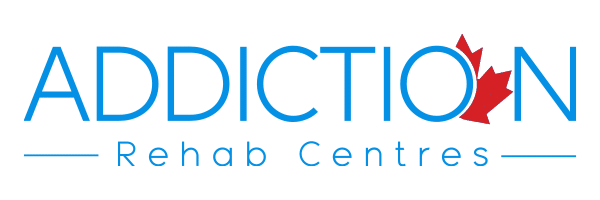Addiction In The Health Care Professionals
Addiction does no longer discriminate amongst race, gender, ethnic historical past, incapacity, man, woman, or profession. Everyone is a human, and everyone can fall victim to the intoxicating effects of addiction. Addiction among healthcare professionals (HCPs) is no different. According to the Journal of Clinical Nursing, approximately 20 percent of nurses struggle with a drug or alcohol dependency. Additionally, it is believed that approximately 1 in 10 physicians will succumb to the same fate. These are professionals, upon whom, the general population completely depends– after all, lives are at stake daily. With long hours on the job and easy access to a buffet of prescription pills, fentanyl, oxycontin, morphine, and other drugs, it is no wonder that addiction is so prevalent in this profession.
Demands of the Job
Stress
A Nursing Times survey found that 63% of actively participating nurses experienced physical or mental side effects from job-related stress. Now add in the rigours and demands of split-second, life and death decisions, and a picture starts to emerge. The range of cases, people, family members, and decisions that are experienced over the course of a shift often take their toll. They can grapple with guilt, despair, anxiety, frustration, and many other emotions. Stress can lead to insomnia, nervousness or depression. The stress and subsequent side effects can often lead to a need for an out or escape. With easy access to a variety of substances, a disorder can easily emerge.
“Sometimes I’d be standing in the operating room and it’d look like I had the flu. So, I’d excuse myself and I’d run into the bathroom, eat 10 [Tylenols with codeine], and in maybe five or 10 minutes I’d be normal again.”
Fatigue
Try spending 10 – 12 hours a day on your feet for four to five days straight and you will get just experience what healthcare professionals endure. These shifts are often mentally, physically, and emotionally draining, and leave little time to decompress. Gruelling shifts can cause healthcare professionals to burn out faster than the general population. As a result, many self-medicate by taking painkillers, opioids, or other prescription medications to get the boost they need.
Accessibility
Healthcare professionals with a substance use disorder face an inordinate number of temptations. A prescription pad can be an open door to a world of different drugs. Drugs are often found to be the outlet of choice among registered nurses when workplace stress kicks in. Even after attending rehab or a treatment program, handling the substances they once abused can cause a greater chance of relapse.
Unique Risks of Addiction Among Healthcare Professionals
The knowledge and unfettered access that healthcare practitioners have can make addiction extremely hard to detect and extremely risky for patients. An article in USA Today cites that more than 100,000 doctors, nurses, technicians, and other health professionals struggle with abuse or addiction. David Kwiatkowski, a former hospital technician, was caught injecting himself with a patient’s pain killer medicine and then refilling them with saline. 8,000 individuals across eight states required hepatitis tests as a result.
Drug diversion refers to healthcare practitioners stealing or ‘diverting’ drugs away from patients for their own use or for sale. Many hospitals have not yet found a way to safeguard or detect diversion. ‘Unexplained Losses’ account for 79% of hospital-controlled drug losses. Published accounts of diversion include falsification of documents, the substitution of saline for medication, and theft.
While termination could be a likely result if anyone is found under the influence in the workplace, the licenses nurses and doctors require to make using drugs and alcohol extra risky. As a result, medical professionals become extremely good at hiding their dependency and refusing to admit that they need help. Losing one’s license could not only mean termination but make finding employment again extremely difficult. Pharmacists, social workers, nurse practitioners, and other medical professionals are humans too who rely on their vocation to provide for their families and livelihoods. When the threat of losing the ability to practice becomes a stake it can send many into hiding.
Warning Signs for Addictions
Many doctors and nurses are considered to be ‘high-functioning addicts.’ This means they are able to juggle the demands of the job and home life while appearing to not be under the influence of mind-altering substances. In some cases, high-functioning addicts need their substance of choice to function. With a demographic so proficient at hiding their issues what are the warning signs to watch out for:
- Preferring the night shift – Less prying eyes means less chance of getting caught
- Falling asleep on the job or in-between shifts
- Work Absenteeism
- Insistence on personal administration of injected narcotics to patients
- Volunteering often to administer narcotics to patients
- Incomplete charting or repeated errors in paperwork
- Excessive amounts of time spent near a drug supply
- Patient and staff complaints about attitude and behaviour
- Progressive deterioration of personal hygiene and appearance
- Wearing long sleeves when inappropriate
- Unreliability in keeping appointments and deadlines
If you’re a healthcare worker and suspect that a co-worker may be indulging or dealing illicit drugs, do not confront the individual or try to intervene in a potential deal. Your safety is paramount, and if you do not protect yourself nobody else will. The best thing to do is to consult security, human resources, and your employee policy manual. In many cases, organizations are likely to have a whistleblower policy that will protect the identity of individuals divulging sensitive information. While there could be backlash from the individual who is struggling with substance abuse if you are found to be the whistleblower, they will hopefully thank you in the long run. Additionally, many organizations will provide an employee assistance program to provide some basic counselling and emotional support. This can be beneficial for both yourself and the individual with drug dependency.
Suicide Rates and PTSD among Healthcare Professionals
Doctors have the highest suicide rate of any profession, and one doctor commits suicide in the United States every day. Depression often underscores the need for early diagnosis and treatment, however other illnesses such as mood disorders, alcoholism, and substance abuse also are risk factors. Healthcare professionals have an added social pressure as well, after all, they are the ones who take care of the sick, and they can’t be sick themselves. One 2016 Facebook questionnaire showed that 50% of female doctors who completed the study reported meeting the criteria for a mental disorder, but were reluctant to get help because of the stigma associated with their profession.
Nurses are especially prone to Post-Traumatic Stress Disorder (PTSD), a mental health condition that comes as a result of witnessing a traumatic event. One study revealed that 22% of participating nurses showed signs of PTSD. Nurses with PTSD or Burn Out Syndrome (BOS) can be more likely to have work-related issues that could lead to substance abuse disorders. Those with PTSD or BOS may have issues engaging in fun activities, doing things at home, or maintaining relationships with friends or family members. In turn, professionals decide that addictive substances may help temporarily alleviate social and professional issues.
Treatment for Healthcare professionals
Not everything is lost though. Healthcare workers can have some of the highest rates of recovery. When a license to practice is on the line, there is added incentive to get healthy. The New Hampshire Nursing Board is working to implement alternative discipline measures to encourage more nurses to enter treatment programs. The ‘Alternative Recovery Monitoring Program’ can start nurses on the road to recovery without the risk of losing their license. Nurses can be admitted into the program either voluntarily or involuntarily and must adhere to strict guidelines set out in the recovery process. Treatment includes individualized treatment plans, weekly peer support groups and 12-step meetings, random drug, and alcohol testing, and reporting their prescriptions for over-the-counter opioids and medications. A nurse could be monitored for three to five years and have stringent return to work parameters put in place. However, this alternative recovery process helps to eliminate stigma and get more nurses to return to work.
No human is infallible, and all can succumb to the temporary escape that illicit substances can have. Healthcare professionals face unique challenges with unfettered access to a variety of narcotics and a high-stress, high-demand job. Understandably, the general population does not consider health workers to be among those likely to tangle with addiction, but the research indicates that they are just as likely to as anybody else. Situational awareness is key for everyone when entering an emergency room or walk-in clinic. If the attending practitioner does not seem to be acting normally or is showing signs of impairment, report it. A nurse or doctor under the influence can do more damage. The good news is that these professionals can have a high rate of recovery and their experiences can, in turn, help the general population. They can have a new level of sympathy and empathy having experienced the woes of addiction. No matter what vocation you may have, recovery is always worth it and is always possible.









